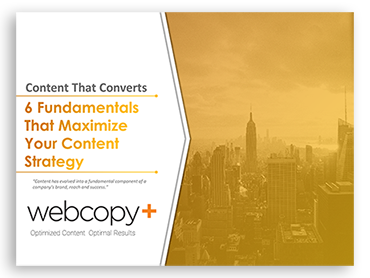
You’ve got plenty of traffic, but you’re not able to persuade visitors to take action. It’s a common and aching issue for many online businesses.
Too often, business owners impulsively throw more money into existing marketing campaigns, believing it’s merely a numbers game — i.e. “I just need more traffic and the sales will materialize.” But one has to realize the simple fact that a zero per cent conversion rate means no sales, whether you’re attracting 10 visitors a day or 10,000.
Presuming you’re driving the right people to your site, Web site conversions can be boosted through various means, explained Yuval Karjevski, Senior Software Engineer at New York-based Reditus Solutions, which helps companies analyze their online performance in a bid to achieve optimal results.
“Site owners need to be aware of any usability, communication or process issues,” stated Karjevski. “Even the smallest flaw can make a big difference to a company’s bottom line.”
He cited a recent homepage redesign for an e-commerce client in the eyewear industry. Just a few initial enhancements, including new links with more enticing calls to action, a best-seller product list and a ‘hacker safe’ logo, boosted the online retailer’s conversion rate by more than 25 per cent.
Karjevski says online businesses commonly invest great amounts of time and money to attain growth, but neglect the fact that they might have fundamentally flawed Web sites.
“It’s like pumping more air into a leaky tire,” he explains. “No matter how hard you try, you’re not going to get very far.”
Web Site Conversion Ground Rules
Whether you’re selling products or services, there are several basic Web site conversion strategies you can employ to help boost sales and maximize profitability from your existing traffic:
Metrics and Analytics
- Define your Web site’s objectives. For instance, do you want to improve conversions? Increase your customer loyalty? Fine-tune your e-mail campaigns? Then focus on one element at a time.
- Get the right tools in place so you can continuously measure results and gain insight into your visitors’ behaviour. Google Analytics is a good starting point, and there’s no cost to register.
Web Copywriting
- Feature concise and compelling web copy that clearly outlines the benefits you have to offer customers. If your product or service will make customers richer or healthier, tell them so, and explain how. Benefit-driven, relevant sales copy is the quickest and most effective way to engage online visitors.
- Follow up the benefits with strong calls to action. You might be conducting business in cyberspace, but some ‘old school’ rules still apply, including the classic, “ask for the sale.”
- Eliminate any remaining doubts or concerns by showcasing testimonials , guarantees and privacy policies. Special note: many consumers view testimonials as suspect, especially on the Web, so be sure to include full names, titles and business information to establish credibility.
Usability and Design
- Good design puts function before form. The most beautiful site on the Web might be nice on the eyes, but it’s useless if it’s not achieving its objectives. Ensure all your design elements promote usability to help users complete intended tasks. Frustrate your visitors and they’ll take a trip to your competitors, in two clicks or less.
- Your site’s architecture and menus must be standardized and intuitive so users can easily find what they’re looking for. Navigation should comprise categories that make sense, and not go too deep. If visitors need to take time to learn how to use your Web site, consider them gone.
Process
- Clearly inform and instruct your visitors on desired actions and options every step of the way. Leave guesswork out of the equation.
- Eliminate unnecessary steps in the checkout and payment processes. The fewer pages and clicks, the better. A recent Marketing Sherpa study revealed online shopping carts are abandoned almost 60 per cent of the time due to poor processes and designs. Meanwhile, web analytics service providers like Fireclick report cart abandonment rates as high as 82 per cent. That’s a lot of lost sales for any business.
- Offer customers as many payment options as possible, particularly those that are being offered by your competitors.
What Should Your Conversion Rate Be?
If you drive the right traffic to your site, convey and offer value, and make it easy for visitors to take the desired actions, your business should be enjoying a respectable conversion rate. But what is a typical conversion rate?
It all depends on your business and industry. Following are some average conversion rates, compiled from Fireclick’s retail customers, for a one-week period in September.
Vertical Conversion rate (%)
Catalog 6.9
Software 3.9
Fashion/apparel 2.2
Specialty stores 1.7
Outdoor/sports 0.5
Electronics 0.5
All verticals 2.4
(Source: Fireclick Index)
Convert Your Current Traffic
Convert prospects by eliminating resistance and roadblocks. Clearly tell visitors how they’ll benefit from your product or service, ask for the sale and make it easy for them to take action.






I think that your paragraph lineheight @ http://www.webcopyplus.com/content/view/188/62/ might be a little small. It’s hard to read so I stopped reading your article after the first few lines. I don’t know if this is a good place to bring up this criticism, but I’m a lazy web designer.
Funny, at first I thought a lot of this is common sense. It’s so simple. But then I realize hardly anyone on the web seems ot have common sense. All businesses should read this article and find out if they are on the right track, or even close.
Good article and excellent points!
Recently, there has been a good deal of litigation by the
FTC against blogs and website promoters
for not publishing their advertising revenue, or existing
relationships with advertising networks.
What are your personal ideas concerning how this could effect
the blog world?